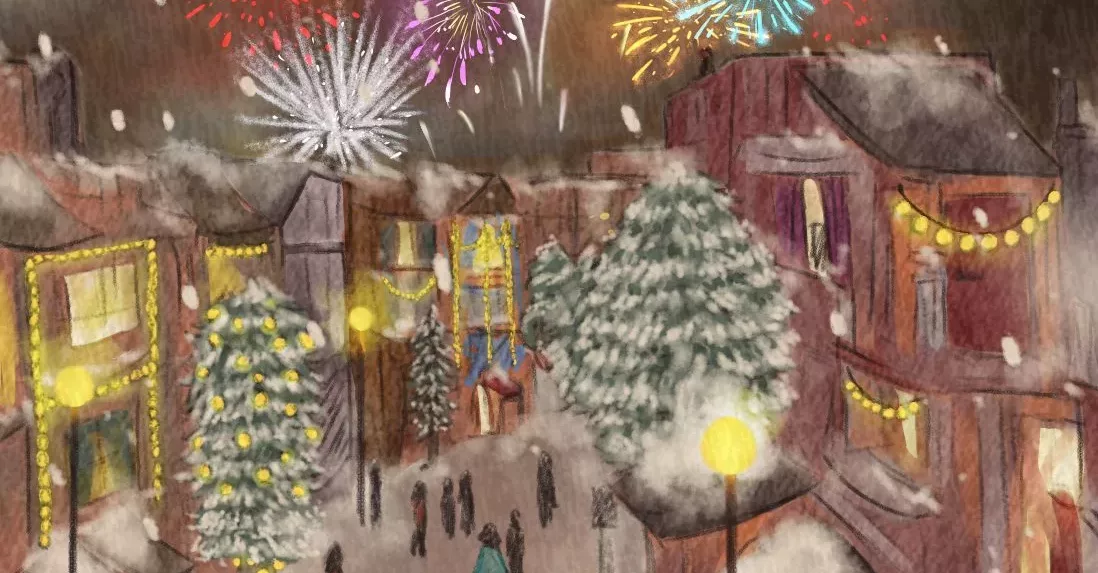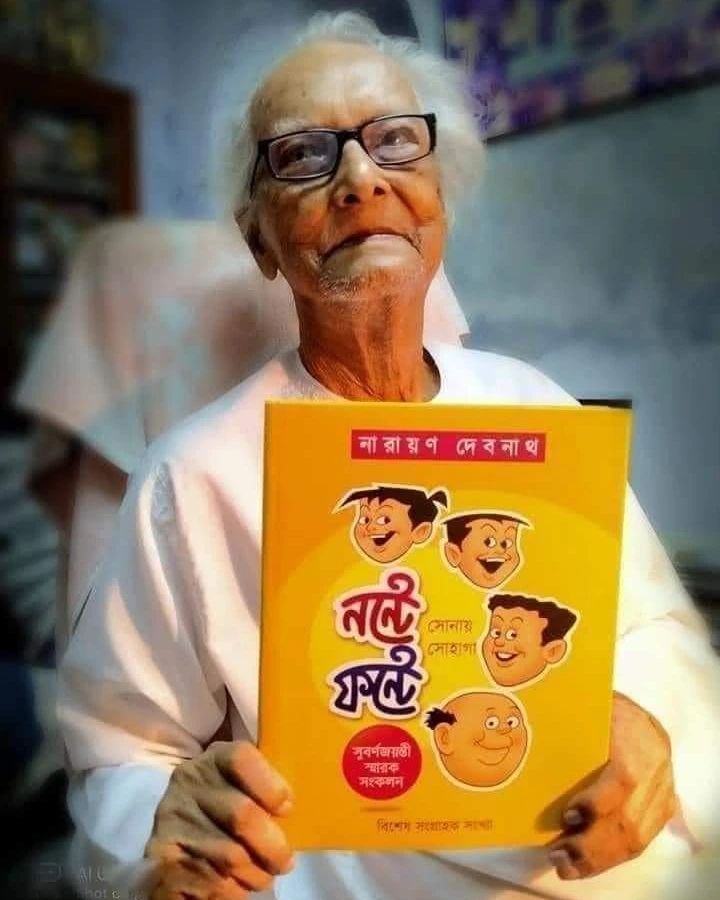Salute Narayan Debnath, the Trendsetter of Bengali Comics

It is hard to imagine a kid born in a Bengali household between the mid-60s and the early 2000s not to have had either of the iconic duos Nonte-Fonte and Handa-Bhonda or the neighbourhood Bengali superhero Bantul the Great as a childhood companion. Behind the clever strokes of the illustrations, humorous ventures, and gripping tales of these characters’ everyday lives was the virtuosity and brilliant, the imaginative ability of the notable author, illustrator, and cartoonist, Narayan Debnath, the avant-garde of Bengali comic strips. His creations will forever remain embedded in the heart of every Bengali kid who has grown up without fast internet or easy access to western media for entertainment.
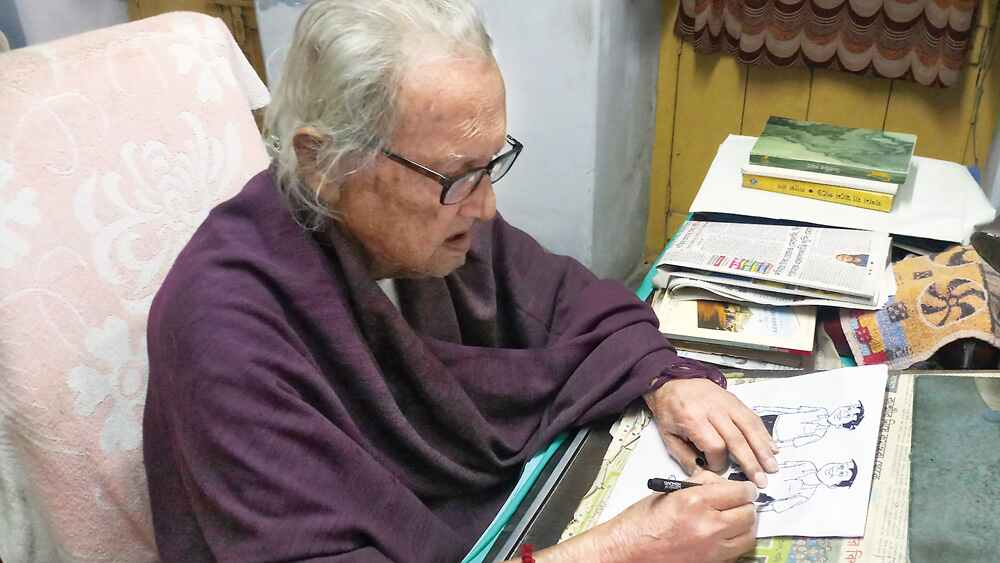
January 18, 2022, therefore, was a grief-stricken day for many as it carried the architect of several timeless classics of Bengali literature to the world of eternal rest.
The accounts of the artist’s life, his works and accomplishments deserve to be learned and retold time and again, especially by the younger generation of Bengali origin.
Born and brought up in Shibpur, a suburban area situated in Howrah of West Bengal, Narayan Debnath had inherited his aptitude for drawing and designing from his family of gold retailers and perfected his talent by making designs for gold jewellery for the family-owned business. Since Debnath had harboured a passion for visual arts from a young age, he entered the Indian College of Arts and Draftsmanship in Kolkata, aiming for a degree in Fine Arts. Later, having dropped out in his final year, he started working as an independent designer of logos and intertitles for advertising agencies.
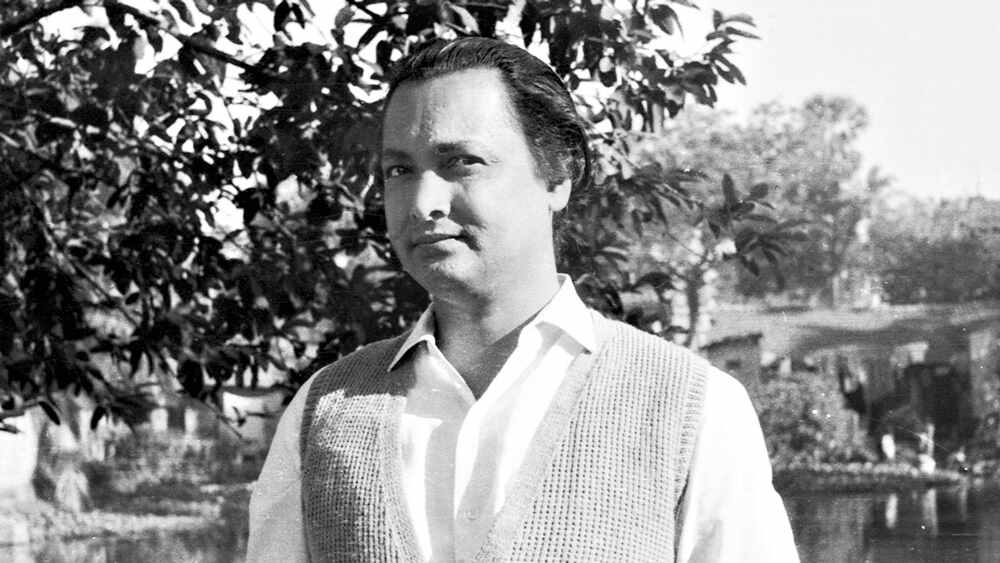
The artist met with the first breakthrough in his versatile career of art in 1950 when a well-known publishing house named Deb Sahitya Kutir contacted him and got him to create illustrations for children’s books and design covers for the translated versions of Western classics. In 1962, encouraged by the editors at Deb Sahitya Kutir, Debnath started drawing characters for his first Bengali comic strip “Handa Bhonda” to be published in Shuktara Magazine, a monthly periodical in Bengali for children. With only one other leading Bengali comic strip, Pratul Chandra Lahiri’s Shiyal Pandit, Bengali comics were not very popular among the masses.
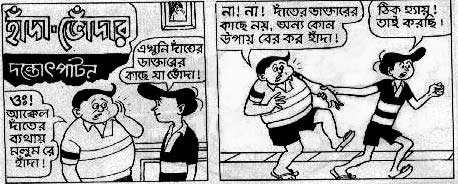
Initially printed in black and white, Debnath’s Handa-Bhonda gained rapid success and great love, especially from kids. The plot of this comic was based on the escapades of a pair of teenagers, mischievous Handaram Gargari and well-behaved Bhonda Pakrashi. To write the episodes, Debnath took inspiration from the real-life pursuits of playful kids in a typical West Bengali neighbourhood and added bits of his imagination and lots of zing and zest to it. This comic series continued for 53 years, earning its legendary creator the unbeaten record for an individual artist’s longest-running comic series.
Three years later, Debnath birthed his personal favourite character and his most popular comic strip, “Bantul the Great,” was published in the summer issue of Shuktara. Dressed in a pink vest and black shorts, mighty and humanitarian Bantul was the Bengali equivalent of Superman, who served his community by fighting off and punishing the wicked. His gigantic midriff, scrawny legs, and boy-like head were inspired by a British comic character called Desperate Dan. Renowned Indian bodybuilder Manohar Aich, a friend of Narayan Debnath, was also in the artist’s mind when he devised Bantul’s giant physique and physical strength. Though not an instant hit, Bantul the Great was vastly loved by the people when Debnath gave the protagonist undefeatable superpowers. Upon the insistence of the editor and publisher to portray a spirit of indomitability in Bantul’s character for the readers to empathise with the 1971 liberation war of Bangladesh, Debnath buffed Bantul up with powers to fend off attacks from the Pakistani army and pulverise their tanks, missiles, and war aircraft, etc.
Among the top three of Debnath’s various phenomenal works is “Nonte Fonte”, introduced in 1969, and originally created as a black and white monthly comic strip for Kishore Bharati magazine bearing semblance to the stories of Handa-Bhonda. In 1972, while working on the illustrations for“Paribartan”, a book written by Manoranjan Ghosh, Debnath was intrigued by the plot surrounding the characters’ dormitory life. He enjoyed drawing those scenes so much that a year later, he incorporated narratives of the hostel life of the protagonist duo in Nonte Fonte and added new characters and elements to the plot. Alongside the adventures of Bantul and Handa-Bhonda, shenanigans of Nonte and Fonte and the supporting characters gained such immense popularity among young readers that the comic strip was later turned into a separate comic book in 1982 and published in coloured form in 2002. The animated television series Nonte Fonter Nanan Kirtee also gained huge traction from the audience. Debnath entertained us with pieces of Nonte and Fonte’s lives for years till the final strip of the comic was published in the Durga Puja issue of Shuktara in 2017 when the artist was 93 years old.

The artist also gave Bengali comic readers one of their earliest female protagonist duos in his comic strip “Shutki ar Mutki” in 1964, when there were not many popular female characters in Bengali comics. Of course, his popular creations are not limited to the light-hearted slapstick comedy genre. Detective Koushik Roy, one of the artist’s serious comic characters, was seen on Shuktara’s front cover in 1976 for the first time and appealed to readers who loved mystery, thriller, and action-based genres. Along the lines of lifelike illustrations of the characters, Debnath also crayoned the elements of author Dilipkumar Chattopadhyay’s comic series “Detective Indrajit Roy and Black Diamond”.
A maestro in different forms of art who could bring any story and narrative to life with his hand-drawn figures, Narayan Debnath created numerous other comic strips for periodicals, including “Pawtolchand, the Magician” (1969) including “Bahadur Beral” (1984)”, “Daanpitey Khandu aar taar Chemical Dadu” (1983), “Petuk Master Botuklal” (1984), and “Itihaase Doirath” (1974), a strip based on real-life events relating to cruel fights and battles of international history.
A tribute to Rabindranath Tagore on the poet’s 100th birth anniversary in the form of a comic strip illustrated by Debnath was published in the 1961 May issue of the famous Indian magazine Anadamela. His artistic genius was also seen in his works in “Chobite Vivekananda”– a portrayal of the life of Swami Vivekananda to commemorate his birth centenary, and in “Chitre Durgeshnandini”, a remake of author Bankimchandra Chattopadhyay’s novel “Durgesh Nandini”.
The versatility in the skills of the late artiste is seen in his portfolio of works – ranging from satire to seriousness, line arts to heavily detailed retro graphics all drawn and coloured by hand. Through the uncomplicated stories in his comics, Debnath tried to portray the power of good over evil. The way the mischievous Handa never gets away with tricking the innocent Bhonda or how the impish Ketulda always gets busted for bullying and conspiring against Nonte and Fonte. The way Bantul’s determination to use his strengths to help people made him revered and admired in society – all were intended to instil righteousness among the young readers. Debnath started creating comics when comic artists were not known to make good money. Debnath changed that notion with his excellent planning, writing, and illustrating, making it possible to properly commercialise his work.
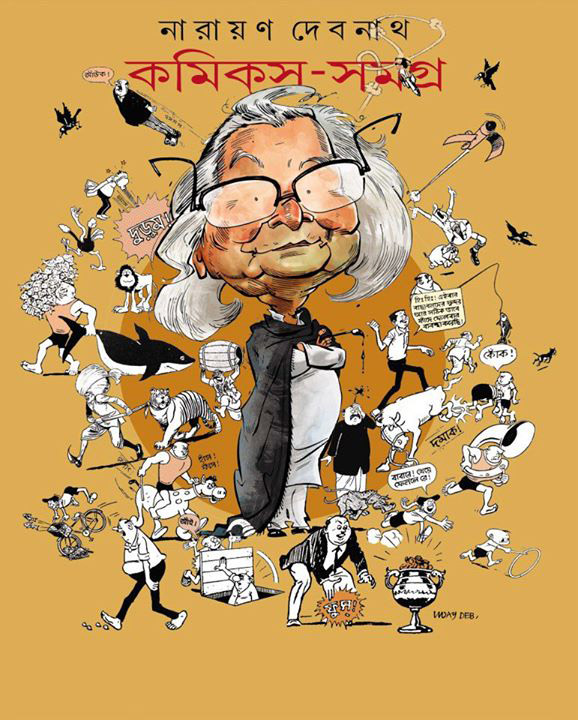
His comics’ regular appearance of culinary themes and food-related discussions and situations reflect the illustrator’s love for food. In an interview for a local newspaper, Narayan Debnath’s son talked about his father’s fondness for spicy, flavorful food items, favourites being Biryani and Mutton curry. He also loved to do grocery shopping for his family. Although introverted by nature, the late cartoonist enjoyed long conversations and heart-to-hearts with his loved ones. His lifestyle has been repeatedly called reclusive, but in reality, he was humble and soft-spoken, qualities that kept him away from the complicated limelight.
In 2013, the literary genius received the Bal Sahitya Puraskar for his Narayan Debnath Comics Samagra from the Executive Board of the Sahitya Akademi. The same year he was also awarded Bengal’s highest honour Banga Bibhusan by the Government of West Bengal. The only Indian comic artist with a D. Litt. degree, the highest level of educational degree to date, Narayan Debnath, was conferred with Padma Shri in 2021. He was bedridden at the time and had to be repeatedly explained to that he had indeed received the fourth highest civilian honour of the Indian Republic, to which his response was, “Finally?”
The long-serving artist drew his last breath at the age of 96 at a private hospital in Kolkata after undergoing treatment for about a month. Truly, his demise has formed a gaping chasm in the realm of Bengali Literature. However, it is up to the generation who spent their childhood and teenage years with Narayan Debnath’s creations to ensure that his works are preserved, treasured, and passed on to the newer generation.

